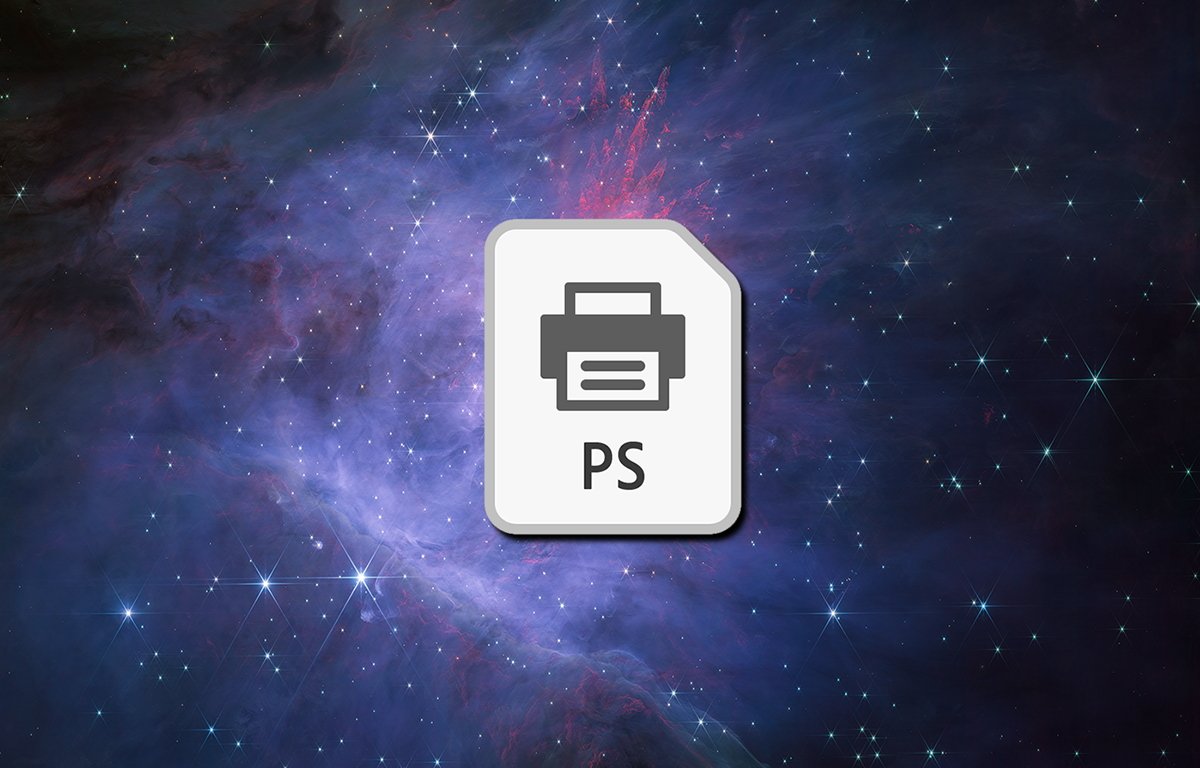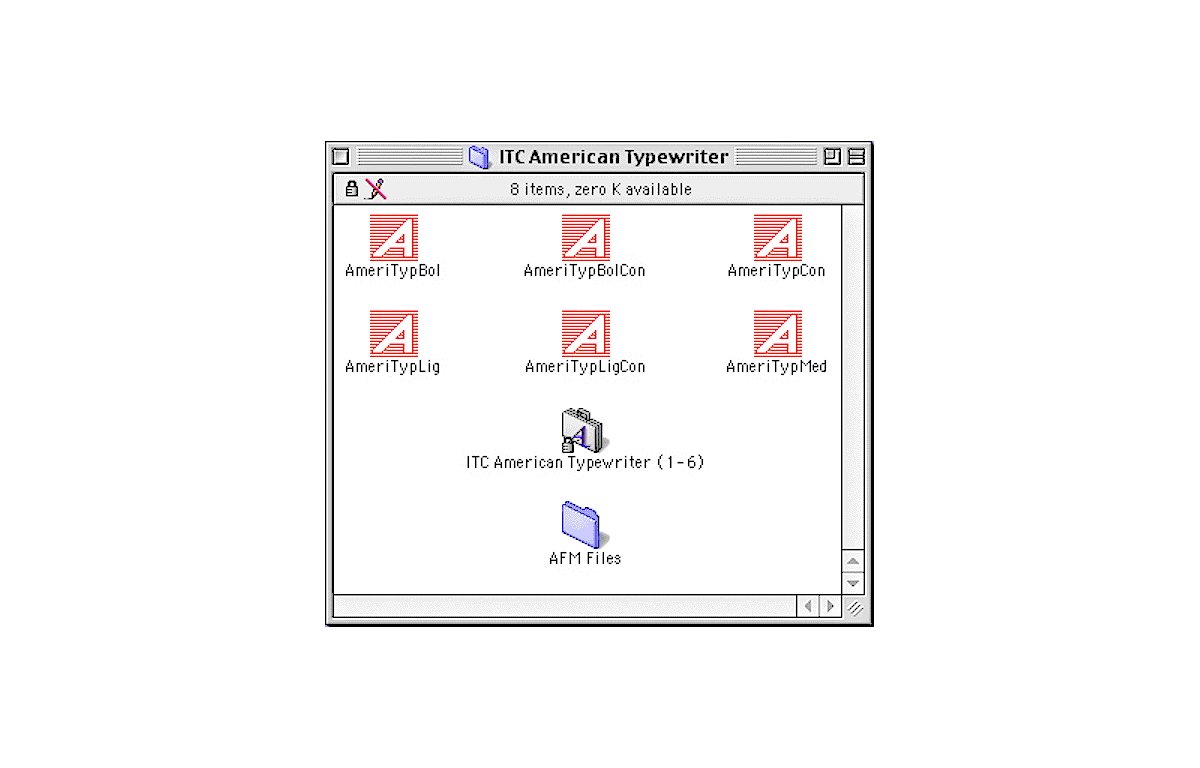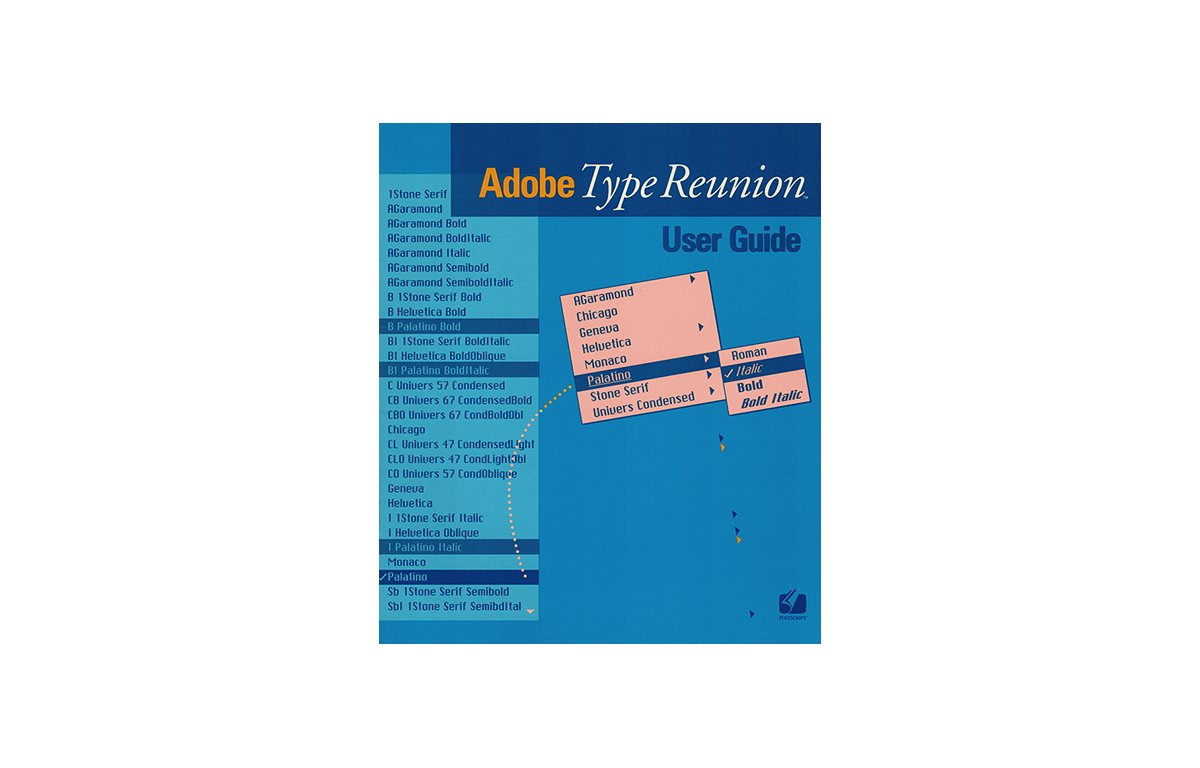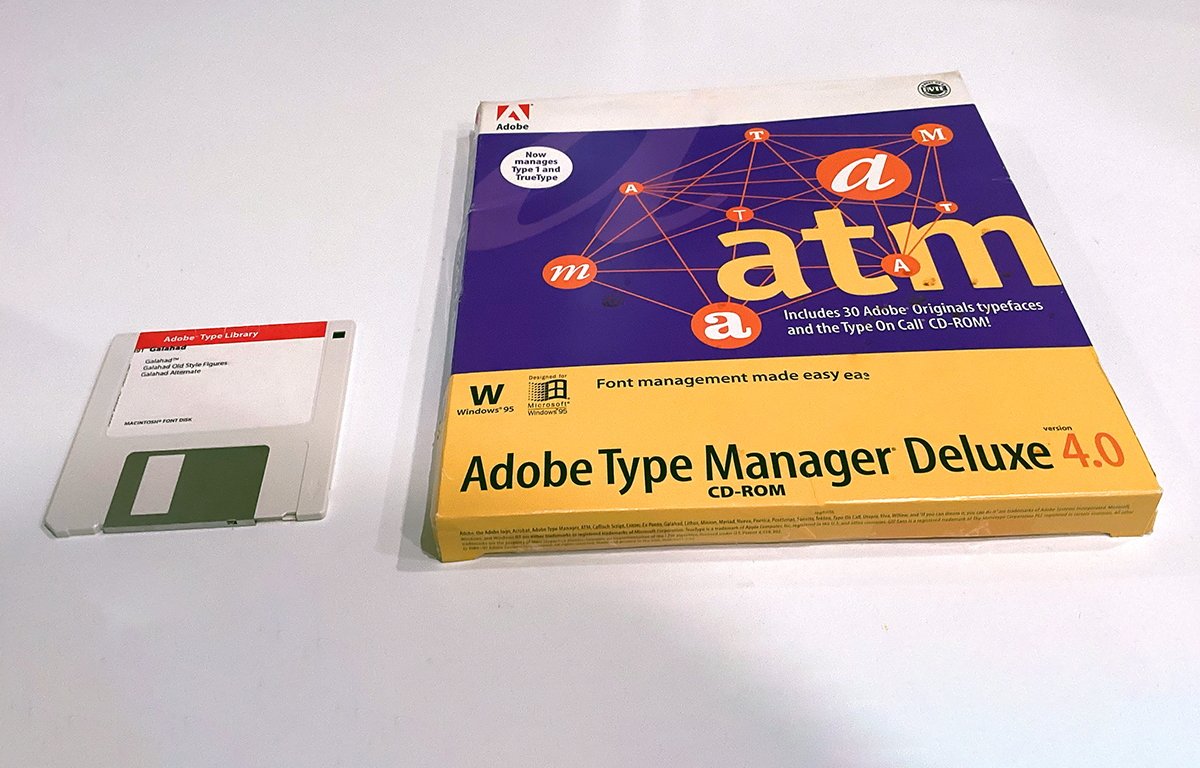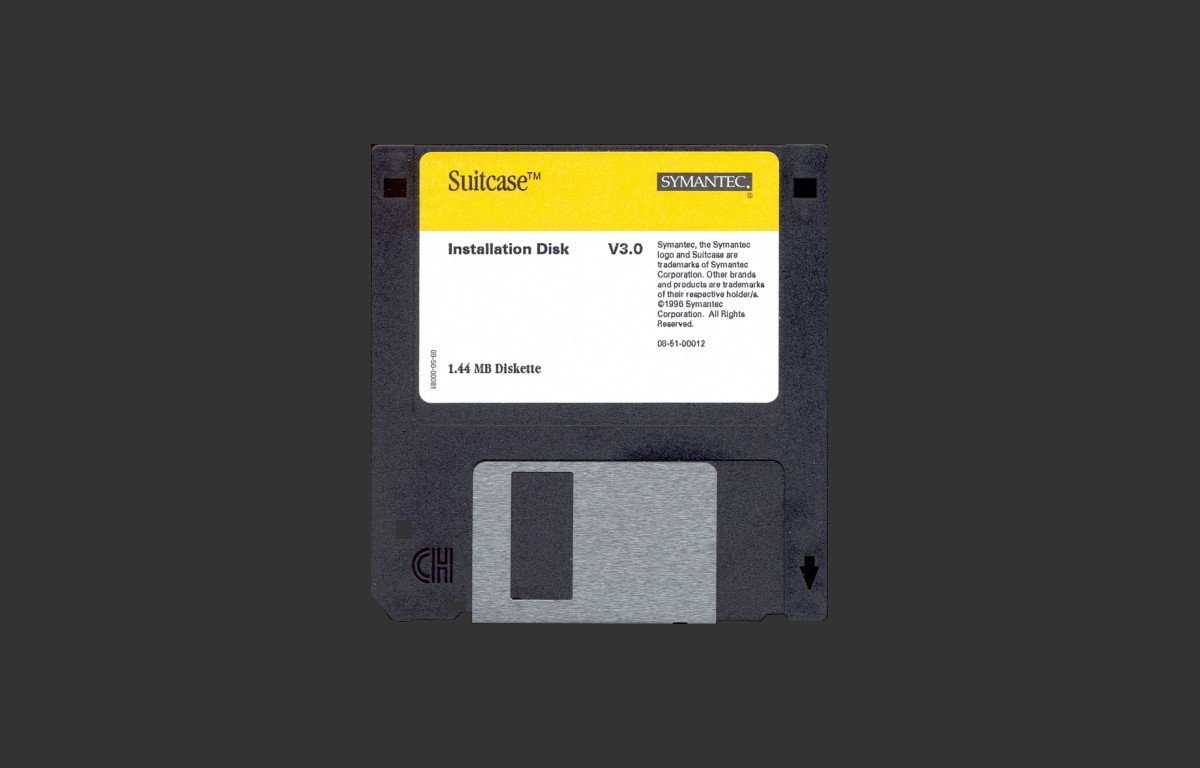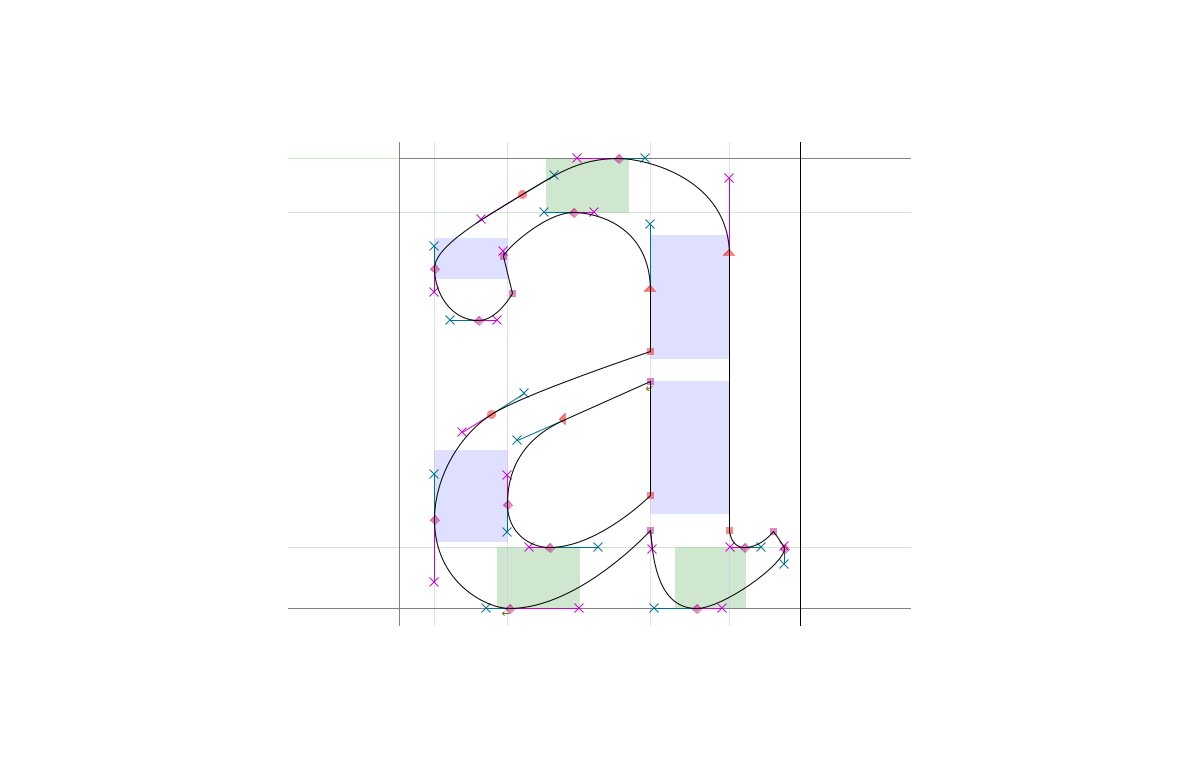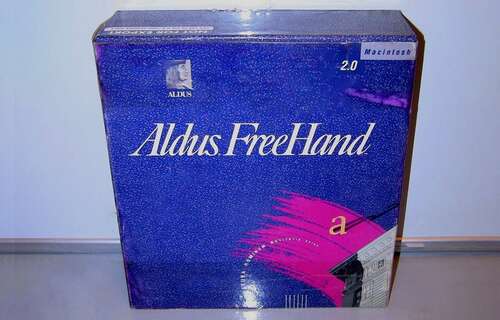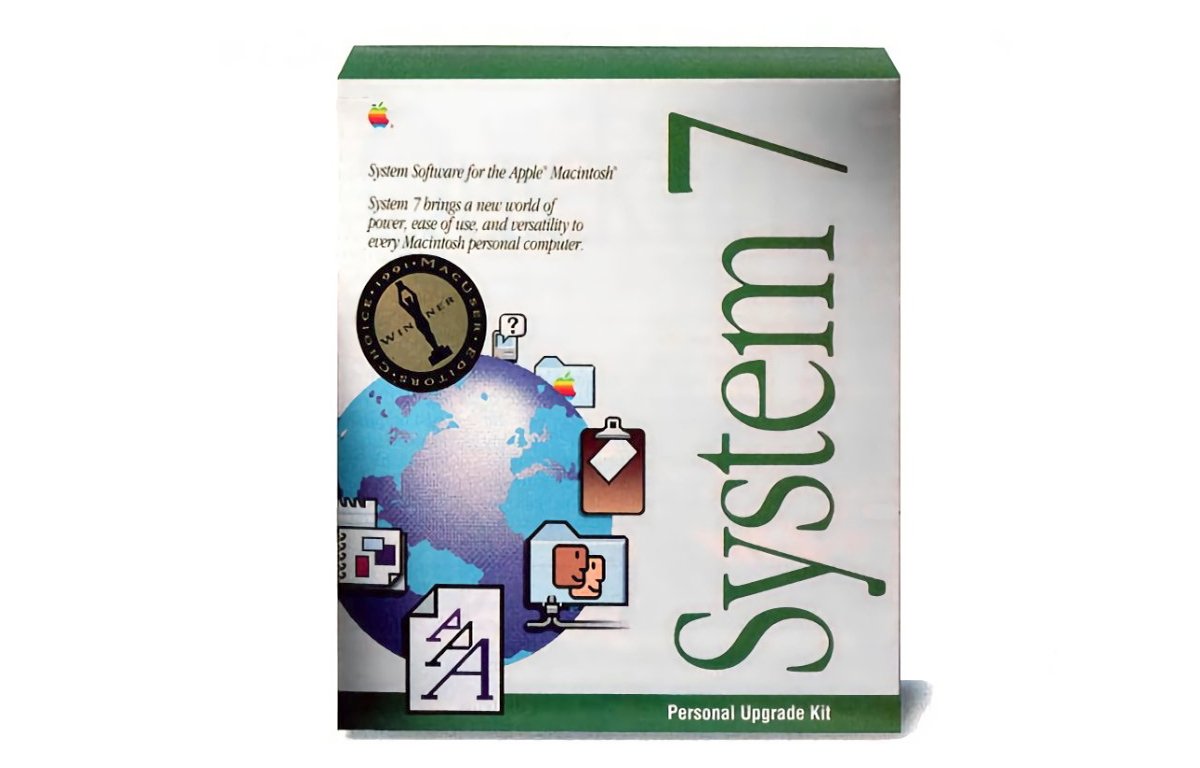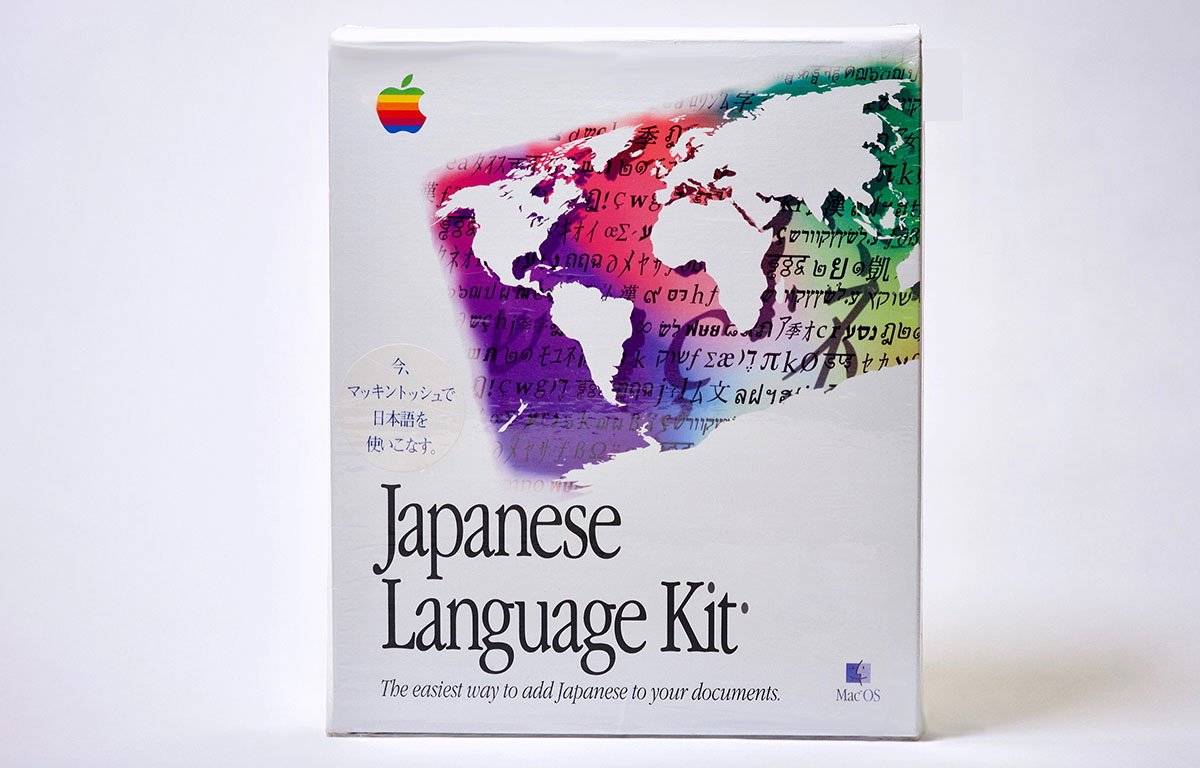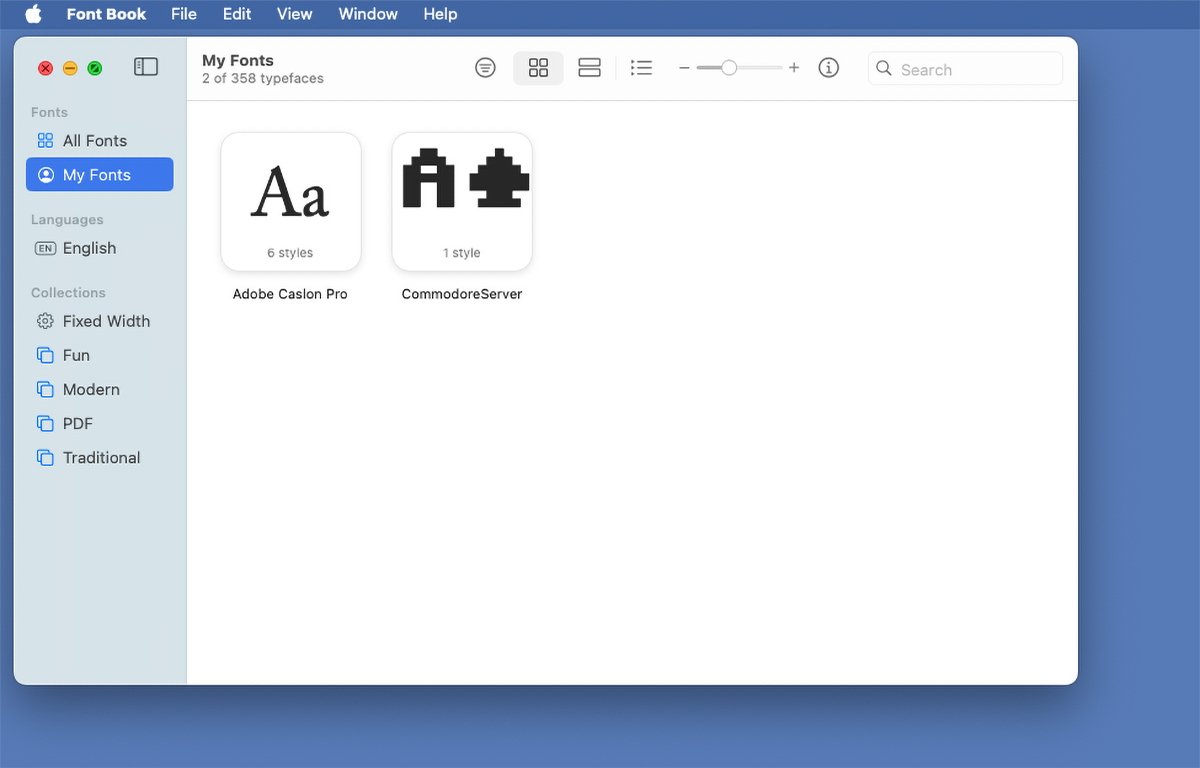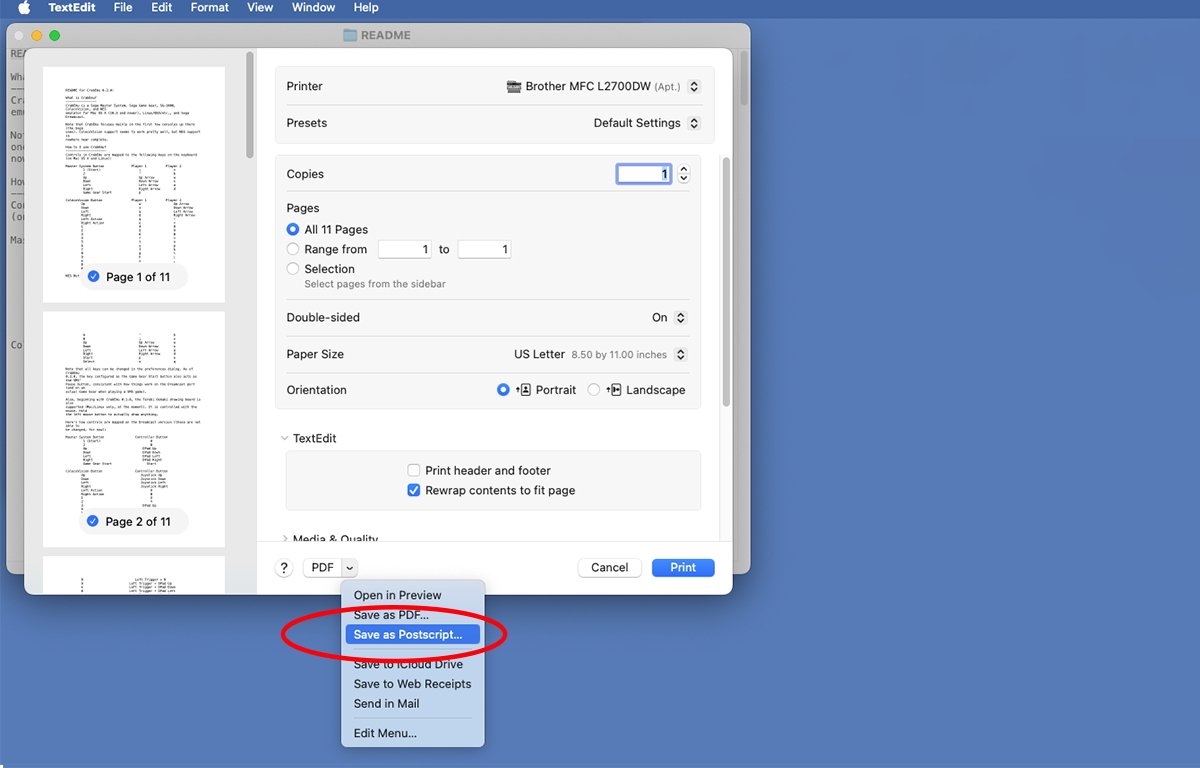Postscript is all but gone, and today, newer font standards such as TrueType and OpenType rule the roost. Here’s how we got from desktop PostScript in the early ’80s to today.
When the Mac first appeared in 1984 it radically changed the way print and type were created and managed. Gone were the days of manually setting type on a printing press or hand-designing graphics on a designer’s easel.
The Mac delivered WYSIWYG (What You See Is What You Get) design and layout using (at the time) revolutionary software such as Aldus Pagemaker, and from Adobe Systems, Inc. Illustrator.
In 1986 Apple released the Mac Plus, an upgraded version of the original Mac – now with 1MB of RAM. It also released the LaserWriter – the world’s first mass-market consumer desktop laser printer.
Both were hits and immediately became the Mac’s killer app. Designers, print media, and news outlets bought the Mac and LaserWriter and designers could now design print publications, import text and graphics, and arrange objects on pages onscreen simply by clicking and dragging.
Adobe’s initial graphic design products live on today: Illustrator is still the major definitive professional vector illustration app for designers and print publishers, and one of Adobe’s other apps – InDesign, is actually the successor to Aldus Pagemaker.
Adobe bought Aldus, then later bought another company from the 1980s and 1990s called Macromedia, which made the now-defunct Flash, and other apps. Aldus also had a presentation design app called Persuasion which was a bit like how Apple’s Keynote is today.
Several other versions of the Mac followed including the SE, SE/30, the Mac II (the first color Mac), Iici, and a host of later color machines.
Adobe PostScript enabled it all
Early in the 1980’s Adobe Systems had already been working on a page layout and description language called PostScript. Apple and Aldus adopted PostScript as did many laser printer manufacturers.
Every Apple LaserWriter came with a PostScript interpreter built in, as well as ROMs containing limited sets of Adobe’s PostScript fonts, called Type 1 fonts. Additional Type 1 fonts could be installed in the Fonts folder on the original Mac OS, along with bitmapped screen-only suitcase font files.
When you went to print a file on your LaserWriter, Mac OS would download any additional needed Type 1 fonts to the printer’s memory and the PostScript interpreter would rasterize them into text on the page.
Original Type 1 fonts: Type 1 ‘outline’ fonts at top, a bitmaped ‘suitcase’ font file for screen display, and Adobe Font Metrics files.
Unfortunately, the original Mac OS didn’t support PostScript in its API directly.
Adobe’s early success was largely built on the back of PostScript and Illustrator, with many more products to follow. Adobe made billions off the PostScript licensing royalties Apple and other printer manufacturers had to pay to put PostScript in their printers.
Third-party Type 1 font vendors soon appeared. The desktop publishing market (DTP) exploded, and Apple and Adobe were on their way to mega-success.
Apple and the Mac had badly needed a killer app at the time and the combination of the LaserWriter, the Mac Plus, and PostScript were it. In fact, if not for desktop publishing and the LaserWriter, Apple might not have survived.
PostScript describes pages, vector graphics, and fonts
PostScript is a very easy-to-read English-like language that describes objects to be drawn on a page. Commands are short and simple and usually describe paths (called Bezier paths in mathematics), attributes of paths, colors, line sizes (strokes), fills, and other objects.
The Type 1 font standard did the same, but for fonts – complex Bezier paths were used to draw font outlines, and thickness as well as graphics objects (which we’ll get to in a moment).
Because PostScript was terse and text-based, vector image files and fonts could be described while keeping file sizes small.
Illustrator is based on these same concepts – using PostScript to draw and display shapes, although when displayed on early Mac screens the objects had to be converted to the Mac’s crude bitmapped-based drawing engine, called QuickDraw. The original Mac never had true WYSIWYG but it did come close.
Steve Job’s second company, NeXT, Inc. made newer computers starting in 1989 which did use Display PostScript for true WYSIWYG display on-screen and on the printed page. NeXT also made and sold its own small PostScript-based laser printer.
One of the first apps ported to NeXT machines was Adobe’s Illustrator.
Several additional LaserWriter models from Apple followed, each with more features, more internal memory and fonts and faster performance at lower prices.
Mac users loved the ease with which fonts could be installed, removed, and downloaded into and from the Mac. The entire system was easy, seamless, and just worked.
Later Adobe made and sold additional Mac PostScript-releated software such as Adobe Type Manager (ATM), Type-On-Call CD-ROMs with unlockable fonts, and font collections on 3.5-inch floppy disks which fit early Mac floppy drives.
ATM essentially tried to add Display PostScript to early Macs in graphic design apps with varying levels of success. It read and rendered Type 1 fonts on the Mac’s display by using vector graphics converted to bitmapped fonts, or had corresponding bitmap fonts installed alongside Type 1 fonts for printing.
While in many cases this improved fonts on the Mac’s display, there were drawbacks – namely performance – and sometimes type laid out on a page with ATM wouldn’t exactly match when ATM was turned off.
Apple, Adobe, Illustrator, and NeXT
The original Mac models didn’t support PostScript fonts directly, and later on users could install both bitmapped screen fonts as well as PostScript fonts which would be downloaded to a laser printer at print-time. This is where the “Fonts” folders in macOS originally came from.
Adobe Systems’ co-founder, John Warnock who passed away in August at the age of 82, initiated the PostScript project at Adobe.
Users loved the Mac font system, but as more and more fonts proliferated, the font storage system quickly got out of hand. Worse, most Type 1 fonts had several variants, or faces, in each font which quickly made the Mac’s font menu unwieldy.
Later a company called Fifth Generation Systems made a Mac utility called Suitcase and Suitcase II which made font management easier. Symantec bought Fifth Generation Systems and Suitcase, and then another company (Extensis) bought Suitcase from Symantec.
You can still get the “final version” of Extensis Suitcase Fusion on their website for download for macOS.
PostScript itself is very easy to understand just by reading. Most PostScript files store their contents (code) as plain text. Here’s a small sample:
$F2psDict /mtrx matrix put
/clp {closepath} bind def
Splines and Bezier curves
Bezier curves are based on splines – paths described by polynomials and “knots” or points. Each path is described by two or more points, with two ends and one or more points in between. Splines interpolate the path along the points to achieve a smooth continuous shape.
Several modern font tools including FontForge allow you to design and export font files in a manner similar to Illustrator drawings.
Adobe chose splines for PostScript because regardless of the display or print resolution, splines can describe shapes at any scale. The data for splines is very compact because instead of describing entire shapes, only points need to be stored.
Adobe Illustrator allows designers to add, remove, cut, paste, and reshape splines by dragging control points along them to change their shapes.
At the time, even though the original Mac’s display was very low resolution (72 dpi), laser printers were already printing at 300, 600, 1200, and 2400 dpi. The Mac’s built-in font system was bitmap-only, and Adobe’s used vector graphics described by math.
As soon as Adobe released Illustrator, Aldus came out with its own spline-based drawing program called Freehand, which was also wildly popular with designers.
System 7, TrueType, and QuickDraw GX
In the late 1980s, Apple saw the limitations of its font system and what Adobe had accomplished, and created a new standard called ‘SFNT’. At the same time, it developed a new type standard, TrueType, which the Mac still supports today.
SFNT was designed to be open and a container for other font types and which supports PostScript, TrueType, OpenType, Web Open Font Format (WOFF), and others.
However, due to early use of C programming language code and design decisions, the maximum number of characters that can be included in an SFNT table is 65,536 (the maximum value of an unsigned short integer variable in C).
Once Apple released System 7 in 1991, which also included color on the Mac for the first time, users could now install TrueType fonts simply by dragging them to the Fonts folder inside the System Folder, or into suitcases.
Apple’s System 7 – sold at retail on floppies. Note the TrueType font icon in the lower left corner.
In this video Apple employee #8 Chris Espinoza who joined the company at age fourteen introduced System 7. Chris is still at Apple.
Prior to using System 7, Mac users had to use an Apple-provided app called Font/DA Mover to install and remove fonts.
TrueType simplified the Mac’s font system. A scalable vector, or outline font standard, TrueType eliminates the need for separate bitmap fonts and stores fonts in one file.
Gone were the days of having to worry about installing matching Type 1 font files for each installed bitmapped font on a Mac.
Microsoft soon added TrueType support to Microsoft Windows, which is still supported today. In response to TrueType becoming a new open font standard, Adobe announced it would open the Type 1 standard as well.
Adobe founder John Warnock decried TrueType as a cheap imitation of Adobe’s technology.
Apple also later developed an additional type standard for its new version of QuickDraw called QuickDraw GX. Dubbed TrueType GX (later known as Apple Advanced Typography) it never fully caught on – and neither did QuickDraw GX – being upstaged by several new mid-1990’s rendering technologies such as OpenType, OpenGL and others.
Apple also had a corresponding 3D rendering technology called QuickDraw 3D which also failed.
Since most of AAT’s features are now supported in OpenType, the continuation of AAT development wasn’t considered necessary.
Unicode, WorldScript, and ATUSI
Around the same time the then-new Unicode open standard was introduced to deal with globalization, non-western languages, and right-to-left languages such as Arabic and others on computers.
Apple created Apple Type Services for Unicode Imaging (ATUSI) for Mac OS 8.5 which shipped as a System Extension in the OS to provide international language rendering using Unicode.
Prior to ATSUI, Mac OS used an Apple-specific standard called WorldScript, which shoehorned non-western languages and fonts into System 7.1 via “Language Kits” which were additional software components that could plug in and provide support for other languages.
Apple deprecated all support for ATSUI and WorldScript in Mac OS X 10.5 Leopard – and support for Mac OS X’s ATS.framework (Apple Type Services) in Xcode 4.6 in 2012. Today, most text handled on macOS and iOS is handled by Apple’s Core Text framework.
Mark David, one of WorldScript’s developers helped found the Unicode Consortium which is still around today.
OpenType and Web Open Font Format
In 1996 Microsoft developed its own font standard called TrueType Open (not to be confused with ClearType), which was later renamed OpenType which still exists today. In 2005 OpenType began the process of becoming an open standard and is now detailed in ISO Standard ISO/IEC 14496-22 (MPEG-4 Part 22), now officially called Open Font Format.
There are also additional standard extensions for Asian (CJK) fonts, which in general have more complex glyphs (shapes) than Western languages. Early on Adobe established its own font extensions for the Japanese language known as Adobe-Japan1.
As early as 2002 Adobe had converted its entire Type 1 font collection to OpenType. As a result, TrueType and OpenType are still the de-facto standards for type on computers today.
Adobe even has a free font download page on its website for some fonts. It also has a fonts marketplace in its Creative Cloud software, from which you can purchase fonts for download.
In 2015 Microsoft added OpenType support for color fonts, emoji, and Scable Vector Graphics (SVG) to the standard.
In 2009 the Web Open Font Format (WOFF) was submitted by the Mozilla Foundation, Opera Software, and Microsoft to the WC3 for approval as an open web standard. Designed to eliminate font download latency and conflicts with locally installed fonts, WOFF also provides font compression for faster page rendering.
WOFF is an SFNT-based wrapper font format based on TrueType and OpenType.
Font collections
Since version 1.4, OpenType has allowed font collections – which can contain multiple typefaces in one file (similar to the original Mac’s suitcase files).
macOS began supporting font collections a few years ago, and if you look in the /Users/~/Library folder in modern versions of macOS you will see both a Fonts, and a FontCollections folder.
There is also a Fonts folder in the /Library folder at the root of your Startup Disk.
If you install fonts into the Fonts folder in /Library they will be available to all users on a Mac. If you install them into the Fonts or FontCollections folders in a user’s /Library folder, the fonts will be available to that user only.
If you double-click an .otf (OpenType) or .ttf (TrueType) font file in the Mac’s Finder, it will open in Apple’s Font Book app and display it in its own window. You can also use this window to replace fonts.
You can also view, edit, and create font collections in the Font Book app. Font Book works sort of like the original Suitcase app worked on the Mac Plus and SE, but better.
Font Book has many more interesting little features such as the ability to view fonts by date added, kind, by name, sample, language, or typeface view, and you can step through each typeface variant in a font collection.
You can also scale font samples using the window’s slider control.
FreeType and Graphite
In 1996 David Turner started the FreeType project, which is a rasterization technology for rendering fonts onto bitmaps, similar to Microsoft’s ClearType. FreeType was later sued by Apple for patent infringement for some patents related to TrueType, but those patents have since expired.
FreeType is also used in Android, ChromeOS, and the Windows 95 clone operating system ReactOS. It’s also used in parts of the Java Development Kit from Oracle.
Graphite is a smart font rendering technology based on TrueType, but which contains advanced features such as context-aware rendering, glyph substitution, and built-in rendering information which means only the fonts themselves are needed for rendering in any language on any device.
Graphite is mostly used on Windows and Linux systems and is available on macOS, but it isn’t widely used on the Mac since Core Text provides similar support.
The end of PostScript
In 2022 Adobe Systems announced it was ending support for PostScript Type 1 fonts. This had been coming for a long time, given TrueType and OpenType’s now dominance as font standards.
Adobe also has new general rendering engines (RIPs) for both file printing and sharing and for commercial printing called Adobe Embedded Print Engine, and Adobe PDF Print Engine, respectively.
Adobe’s Type 1 support officially came to an end in January, 2023. You can use Font Book to see if you still have any Type 1 fonts installed on your Mac.
In 2023 Apple removed nearly all support for PostScript from macOS 14 Sonoma and iOS. The Preview app no longer has the ability to open or display PostScript (.ps) files, nor print them directly.
From a developer perspective, nearly all API-level paths to PostScript have also been removed. Core Graphics’s CGPSConverter is deprecated, and NSImageRep subclasses no longer support PostScript or EPS (Encapsulated PostScript) files.
PMPrinterPrintWithFile no longer accepts PostScript files for print queues, and drawing contexts no longer support displaying PostScript.
There are still a few things you can do with .ps files – for now. For example, both Adobe Photoshop and Illustrator can still import .ps files, but if you do they get converted to graphics and you lose any text as text.
Oddly, Mac’s print system does still support some PostScript functions – undoubtedly because there are many PostScript printers still in use and will be for some time. From the standard macOS print dialog in apps you can select Save as Postscript from the popup menu at the bottom which will produce a .ps file you can save to disk.
If you have a PostScript-enabled printer, or one that contains PostScript emulation, you can still print .ps and EPS files to it by dragging them to the Print Center queue window from your macOS Desktop.
To open a print queue on your Mac, you’ll need to select your printer under the Printers & Scanners tab in the System Settings app, click on your printer under Printers, then click the Printer Queue… button to open macOS’s Print Center.
GhostScript
One company, Artiflex Software, Inc. has its own PostScript interpreter and libraries called GhostScript which are over thirty years old and still work on most modern computing platforms including macOS, Windows, and other UNIX-based systems.
GhostScript is independent of both Adobe and Apple and is a standalone product. It can also print PDF files.
You can download GhostScript from its website, or install it on your Mac using the Homebrew package manager.
Additional resources
Apple has a full list of fonts included in macOS Sonoma and the list is now quite long. You can add and remove fonts with Font Book.
You can also view all of Apple’s original SFNT developer documentation on the internet archive which covers all the original info about font tables, four-character codes, file types, and TrueType GX.
Adobe also originally published several books on PostScript in the late 1980’s through Addison Wesley Publishing.
For a fun peek into the original world of the Macintosh’s development, including Quickdraw and fonts, check out folklore.org by Andy Hertzfeld. Andy worked on the original Mac, and helped define and code the Finder and desktop metaphor as we know them today.
He’s also written a great companion book Revolution in The Valley: The Insanely Great Story of How the Mac Was Made, which is available on Amazon.
There are actually many other font formats and standards available today and we have only touched on the major ones. The subject of computer typography is vast and complex. Learning the entire history of type on computers and the technical details of both typography and printing is a daunting task.
PostScript and Type 1 fonts revolutionized how we design and print documents and changed the world. Nothing lasts forever and although PostScript was an amazing technology, things change as decades pass – and now TrueType and OpenType are the indisputable standards for type on modern computers.
PostScript will go down in history as one of the world’s most amazing technological achievements.
